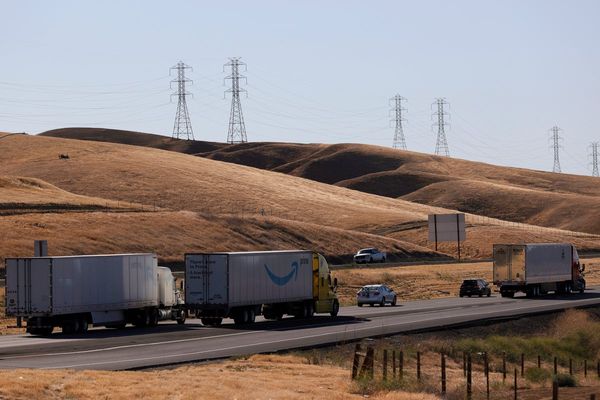The National Flood Insurance Program (NFIP) is more than $20 billion in debt as of 2022. This is partly due to the increase in the number of flooding events in the US in recent years. But another factor is the need for changes in how flood insurance premiums are calculated for homeowners in the program.
Past attempts to fix the issue in Congress were delayed or scrapped due to outcry from homeowners facing sharp increases in their insurance premiums after government subsidies were eliminated. In 2012, legislation opened the way for more fundamental changes.
Beginning last October, the Federal Emergency Management Agency (FEMA) launched Risk Rating 2.0, a new pricing methodology aimed at making public flood insurance more equitable and transparent. This marks the biggest transition in public flood insurance since the beginning of the NFIP in 1968.
According to projected premium changes, 23% of policyholders should see their rates decrease under Risk Rating 2.0, while 77% will see their premiums rise. Policyholders in high-risk areas, such as those along the Gulf Coast, will see a majority of the premium increases.
As of 2018, more than a quarter of NFIP policyholders are low-income households. The goal of Risk Rating 2.0 is to redistribute the cost of flood insurance more equitably across all policyholders by adjusting for individual risk factors and income levels. Ultimately, FEMA aims to increase total flood insurance coverage through the changes, but a potential rise in private flood insurance could complicate these efforts.
Why did FEMA change flood insurance premiums?
FEMA’s previous flood risk system faced two problems: flood insurance premiums were hurting those owning lower-valued homes, and high premiums were dissuading homeowners from buying flood insurance when they needed it.
Under the previous risk rating system, flood insurance policies were based on location and property type rather than individual risk factors and income. This meant that two residential homes within the same floodplain would pay the same premium even if the property values between the two were drastically different. The previous system failed to account for differences in property values, income levels, and proximity to water. All of this resulted in low-income households paying disproportionately higher flood insurance premiums.
According to a study on the affordability of NFIP policies from 2018, about 26% of NFIP residential policyholders in high-risk areas are low-income. There are more than a million low-income policyholders in the NFIP overall.[1] FEMA also expects flooding risks to increase in the coming years, impacting more low-income households as a result.
While legislation was previously introduced in 2012 and 2014 to carry out significant program reforms to the NFIP, efforts largely failed due to push back from NFIP policyholders.[2]
Now, under the Risk Rating 2.0 system, premiums are calculated based on an individual property’s specific flood risk to make costs more accurate to each policyholder. Factors determining the price of the premium include the distance from water, the type of flooding, flood frequency, the cost to replace the structure, and more. The new system also accounts for a wider range of flooding, including river overflows, storm surges, coastal erosion and heavy rainfall.
By raising premiums for high-income, high-risk homeowners, Risk Rating 2.0 aims to lower costs for low-income families. While FEMA claims the changes will help level the playing field for flood insurance premiums, the impact for policyholders varies depending on where they live. Premium increases are largely impacting those living in high-risk flood zones.[3]
How does this impact policyholders?
FEMA has also made it a priority to increase total flood insurance coverage nationwide in the coming years as the estimated costs due to flooding continue to rise due to climate change.
By lowering flood insurance rates for low-to-medium risk, lower-income households, Risk Rating 2.0 could encourage more people to get flood insurance through the program. This may grow the market for flood insurance overall, generating more revenue for the NFIP while reducing the premium increases for all policyholders.
However, the rise in flood insurance premiums across high-risk areas has prompted concerns that some will turn to the growing private flood insurance market. A Congressional Research Service (CRS) report on the flood insurance market suggested that 77% of single-family homes in Florida, 69% in Louisiana, and 92% in Texas would pay less with a private policy than with one through the NFIP.
The market for private flood insurance may also be on the rise. In 2018, premiums for private flood insurance totaled $644 million, up from $589 million in 2017 and $376 million in 2016, according to the same CRS report. A significant loss of revenue generated by premiums would hurt the NFIP’s ability to cover its losses.
Since 2006, the NFIP has been on the Government Accountability Office’s high-risk list of federal programs vulnerable to waste, fraud, abuse, or mismanagement. This is largely due to concerns over the fiscal solvency of the NFIP and exposure to losses caused by climate change.
As of June 30, 2022, the NFIP owes more than $20 billion in debt to the US Treasury. This debt is served by premium revenues and paid back with interest. Therefore, revenues generated by the Risk Rating 2.0 system are important for the fiscal stability of the NFIP going forward.
How does Risk Rating 2.0 affect different states?
As of April 1, 2022, all NFIP policyholders’ premiums are determined by the new Risk Rating 2.0 methodology. While individual policyholder rates are not available through FEMA, they have provided projected first-year premium changes for all policyholders after Risk Rating 2.0. Overall, 23% of policyholders were projected to see their premiums decrease, while 77% were projected to see their premiums rise.
Under the new Risk Rating 2.0 system, policyholders’ premiums were projected to increase by $8 per month on average, showing that the NFIP should ultimately generate more revenues under the new pricing methodology. Of those premiums that were projected to increase, 66% went up between $0-$10 per month, 7% went up between $10-$20 per month, and 4% went up by more than $20.
For policyholders whose premiums are projected to decrease, premiums drop by an estimated $86 per month on average, which is a high rate considering that the average premium costs roughly $60 per month. This implies that a large portion of policyholders who were projected to see their premiums drop were paying an above-average amount for their flood insurance.
According to nationwide NFIP policies, 1.2 million policyholders saw their premiums decrease. States with the greatest percentage of policies with decreased premiums include Alaska (85.9%), Washington DC (72.5%), Maryland (61.4%), and Michigan (54.3%). Florida, Louisiana, and Texas, which account for 3 million, or nearly two-thirds, of all NFIP policies saw a total of 550,000 decreased premiums.
At the same time, 3.8 million policyholders saw their premiums increase. States with the greatest percentage of policies with increased premiums include Hawaii (87.1%), Texas (86.1%), Mississippi (85.6%), and West Virginia (82.6%). Florida, Louisiana, and Texas had more than 2.4 million policyholders’ rates increase.
High-risk areas, which historically experience more floods, saw their premiums rise more. Policyholders in the 10 counties with the most NFIP policies saw an average of 83% of policy premiums increase.
The 23% of policyholders projected to see their rates drop were subject to a one-time decrease to flood insurance premiums. However, the 77% of policyholders projected to see their premiums increased may be subject to future incremental increases. By statute, most rate increases are capped at 18% a year. The NFIP has not definitively outlined a schedule for future rate increases under Risk Rate 2.0.
For more information on flooding and other natural disasters, visit USAFacts’ articles on the frequency of flooding in the US and the occurrence of billion-dollar natural disasters.
[1] “Low-income” here refers to incomes for policyholders which are 80% or below the Area Median Income (AMI), which accounts for incomes and cost of living variances across the country rather than nationwide.
[2] Bills such as the Biggert-Waters Flood Insurance Reform Act of 2012 or the Homeowner Flood Insurance Affordability Act of 2014 (HFIAA) contained measures to remove subsidies or add on surcharges to NFIP premiums.
[3] In the context of this article, high-risk refers to Special Flood Hazards Areas (SFHA) identified at the county level.







